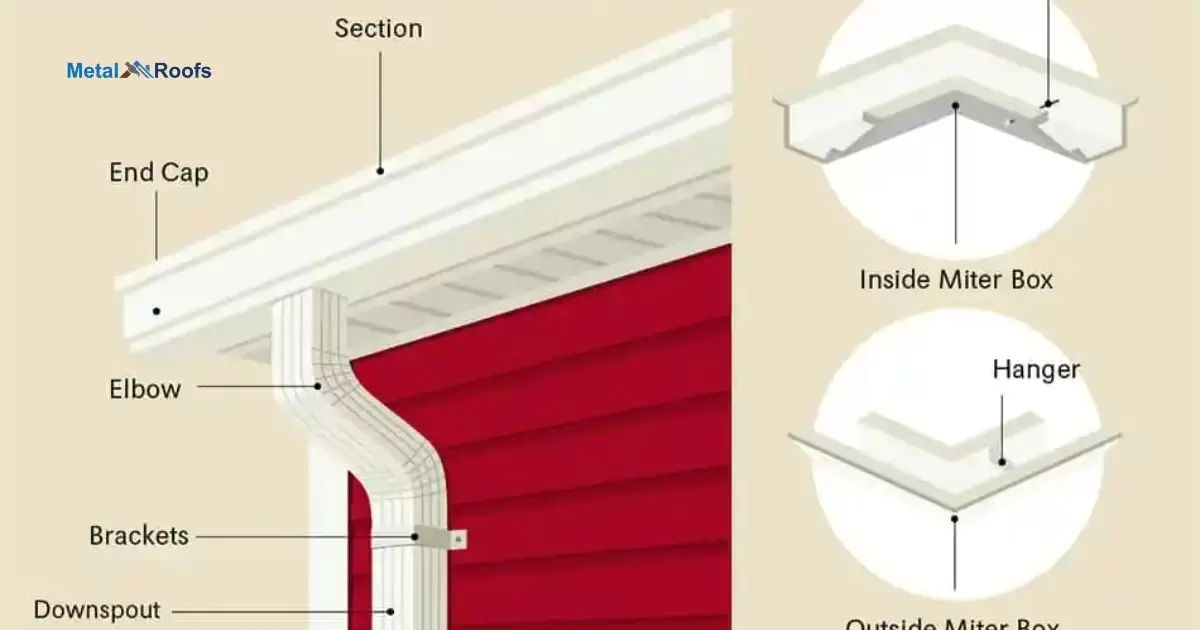A gutter starts falling off, it means it’s not staying where it should be. It might happen because of loose screws or damaged parts. To fix it, you need to tighten the screws, replace any broken parts, and make sure it’s sloped right for water to flow away.
How to fix a gutter that is falling off? Don’t worry, it’s simpler than you think. Tighten loose screws, replace damaged parts, and ensure proper sloping for water flow. With a little effort, your gutter will be back in place in no time.
Fixing a gutter that’s falling off is simpler than you might think. Just tighten screws, replace damaged parts, and ensure proper slope. Regular maintenance will help keep your gutter secure and your home safe from water damage.
Key Takeaways
- Assess damage thoroughly.
- Tighten or replace loose fasteners.
- Replace damaged brackets.
- Repair rotted fascia board.
- Ensure proper sloping towards the downspout.
- Seal joints and seams to prevent leaks.
Understanding The Problem Why Gutters Fall Off
Got a gutter hanging loose? Understanding the problem is crucial. Loose screws or damaged parts are common culprits. To fix it, tighten screws, replace damaged parts, and ensure proper slope. These steps keep your gutter secure and your home safe from water damage.
Regular maintenance is essential to prevent gutter problems. Check for loose screws and damaged parts. Ensure the gutter has the correct slope for water flow and fill any gaps between the drip edge and gutter. This prevents water damage and keeps your home protected.
Common Causes Of Gutter Damage
| Common Causes of Gutter Damage | Solutions |
| Clogged Gutters | Regularly clean gutters to remove debris. Consider installing gutter guards. |
| Loose or Missing Fasteners | Tighten loose screws or replace missing fasteners as needed. |
| Corrosion | Replace corroded sections of the gutter system. Consider using corrosion-resistant materials. |
| Ice Dams | Improve attic insulation and ventilation to prevent ice dams from forming. Install heating cables if necessary. |
Here are some usual reasons why gutters get damaged:
Debris buildup: Leaves, sticks, and dirt can block gutters, making them heavy and strained.
Bad installation: Gutters that are not put in correctly or not securely attached to the house.
Lots of rain: Too much water can overflow gutters and cause damage.
Powerful winds: Strong winds can push or pull gutters out of place.
Signs Your Gutter Is Falling Off
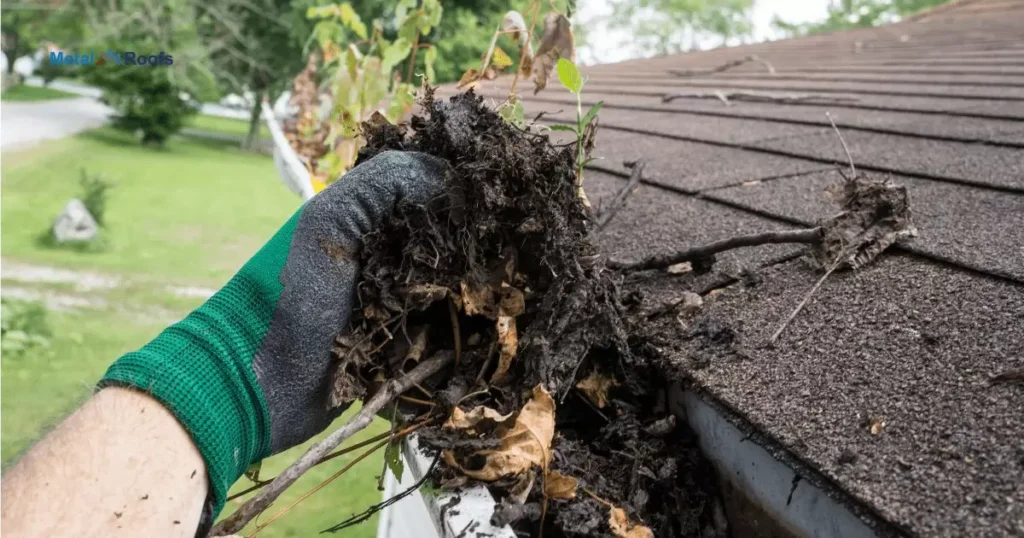
It’s important to notice when your gutter is starting to fall so you can fix it quickly. Here are some signs to look out for:
- The gutter looks like it’s coming off or sagging away from the roof.
- You see gaps between the gutter and the fascia, which means it might not be attached properly.
- Water leaks or overflows from the gutter, showing there’s a problem.
- You hear strange noises or rattling when it rains, which could mean the gutters are loose or damaged.
Knowing what causes gutter damage and spotting these signs helps you deal with the problem early and prevent more damage to your house. Regularly cleaning debris and making sure your gutters are installed correctly also help keep them in good shape.
Tools Needed For Gutter Repair
Before you start fixing things, make sure you have all the tools you need. Here are the important tools you’ll need for fixing your gutter on your own:
- A ladder
- A hammer
- A screwdriver
- A drill
- Gutter spikes or screws
- Sealant
Now that you have all the tools, let’s talk about each one and why it’s important for fixing your gutter.
Ladder
A strong ladder is very important for getting to and using your gutters. Be sure to pick a ladder that is tall so you can reach the gutters easily. It should also be steady and safe to keep you from getting hurt when you’re working up high.
Hammer
A hammer is a useful tool for fixing gutters. You can use it to take out old spikes or screws, fix bent parts of the gutter, or tighten loose pieces. Choose a claw hammer because it can both hit and pull things.
Screwdriver
You need a screwdriver to take out or put in screws in your gutter system. It’s best to have both a flathead and a Phillips head screwdriver since gutters use different kinds of screws.
Drill
You need a drill to make holes and put screws in the gutter. It helps you work faster and better. You might want to use a cordless drill because it’s easy to move around with and very convenient.
Gutter Spikes or Screws
Gutter spikes or screws are used to attach the gutter system to the fascia board. Over time, these parts can loosen or get damaged, causing the gutter to sag or come off. Keeping extra spikes or screws handy lets you replace any broken ones and keep your gutters stable.
Sealant
Sealant is really important for stopping leaks and keeping your gutters strong. It’s used to seal gaps, connections, and little cracks. Make sure to pick a good sealant that works well with your gutter material and lasts a long time to protect against water damage.
Safety Gear For Working On Gutters
It’s crucial to put your safety first when working on gutters. Remember to wear these safety items:
- Gloves
- Safety glasses
- Dust mask
- Strong shoes
Now that you have all the tools and safety gear you need, you’re prepared to handle your gutter repair job with confidence. Take your time, follow safety rules, and seek professional assistance if necessary.
Preparing For The Repair
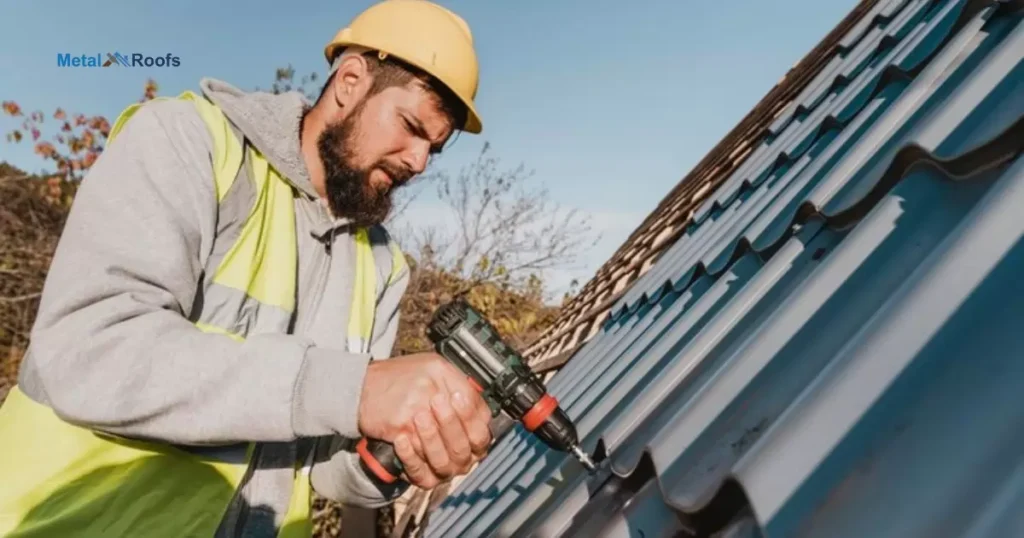
Before you begin fixing the gutter that’s falling down, it’s crucial to get ready the right way. Follow these steps to make sure the repair goes smoothly:
Fixing a falling gutter is an important maintenance job that helps prevent water damage to your home. Checking how much damage there is and getting things ready properly, you can do a successful repair that keeps your gutter working well for a long time.
Assessing The Extent Of Damage
Carefully examine the gutter to see how much it’s been damaged. Look for screws that are loose or missing, cracks, or any other signs that show damage. It’s important to clearly know which parts need fixing so you can plan how to fix them well.
When you check the damage, pay close attention to spots where the gutter is hanging down or coming off the house. These are common signs that the gutter isn’t working right and needs to be fixed quickly to stop more damage.
Also, check how the downspouts are doing and make sure they’re firmly connected to the gutter. If a downspout is broken or not connected right, water can gather around your home’s base and cause problems with its structure.
Cleaning And Clearing The Gutter
Before you put the gutter back in place, it’s really important to make sure there’s no junk blocking the water. Leaves, sticks, and dirt can build up over time and stop the water from draining properly.
To do this safely, use a strong ladder. Check that it’s on a steady surface before you climb up, and have someone nearby in case you need help. Once you’re on the ladder, carefully take out any debris by hand or use a small gardening tool to scoop out the dirt.
Wear gloves and eye protection to avoid getting hurt. You might also want to use a special gutter cleaning tool or a pressure washer attachment made for gutters to get rid of all the junk.
After cleaning, use a hose to rinse out any leftover dirt or small bits. This makes sure the gutter is completely clean and ready to be fixed.
Taking these steps to check and clean your gutter properly sets you up for a successful repair job. It’s important to do this before fixing the gutter to make sure everything works well afterward.
Step-By-Step Guide To Fixing A Falling Gutter
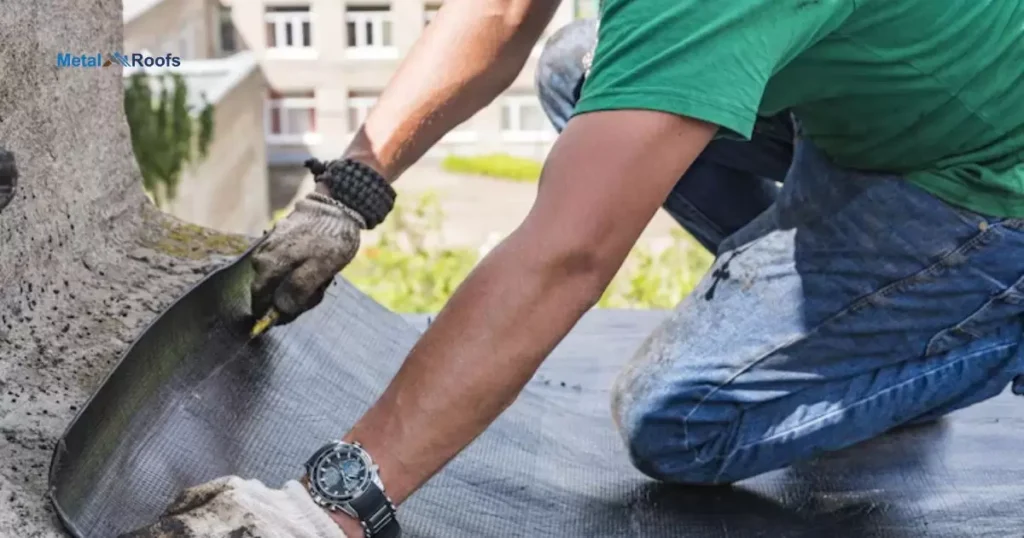
First, assess the issue with your falling gutter. Check for loose screws, damaged brackets, or rotted fascia board. Next, tighten any loose screws and replace missing ones to secure the gutter in place. If brackets are damaged, install new ones for proper support.
Repair any rotted fascia board to ensure a stable base for the gutter. After securing the gutter, ensure it’s sloped correctly towards the downspout for proper drainage. Seal joints and seams to prevent leaks and water damage.
Reattaching The Gutter
After checking the damage and cleaning the gutter, you’re prepared to put it back in place. Follow these steps:
- Put the ladder safely near where the gutter is loose.
- Take out any old spikes or screws using a hammer or screwdriver.
- Line up the gutter with the brackets on the fascia board.
- Attach the gutter securely by using gutter spikes or screws through the brackets into the fascia board.
Sealing And Securing The Gutter
Once you’ve put the gutter back in place, make sure to seal and fasten it properly to avoid more damage later on. Here’s what you need to do:
- Use a waterproof sealant or glue on the connections and edges of the gutter to make sure water can’t get through.
- Tighten any screws or brackets that are loose to give the gutter extra strength.
- Check the entire gutter system to be sure there aren’t any other spots that need fixing.
Maintaining Your Gutters To Prevent Future Damage
Keeping your gutters in good shape is crucial for avoiding damage and making them last longer. Here are some important tips for maintaining them:
Regular Gutter Cleaning
Get into the routine of cleaning your gutters two times every year to get rid of dirt and avoid blockages. You can use a gutter scoop or a garden hose to clear out leaves, dirt, and other stuff that builds up in the gutters.
Seasonal Gutter Maintenance
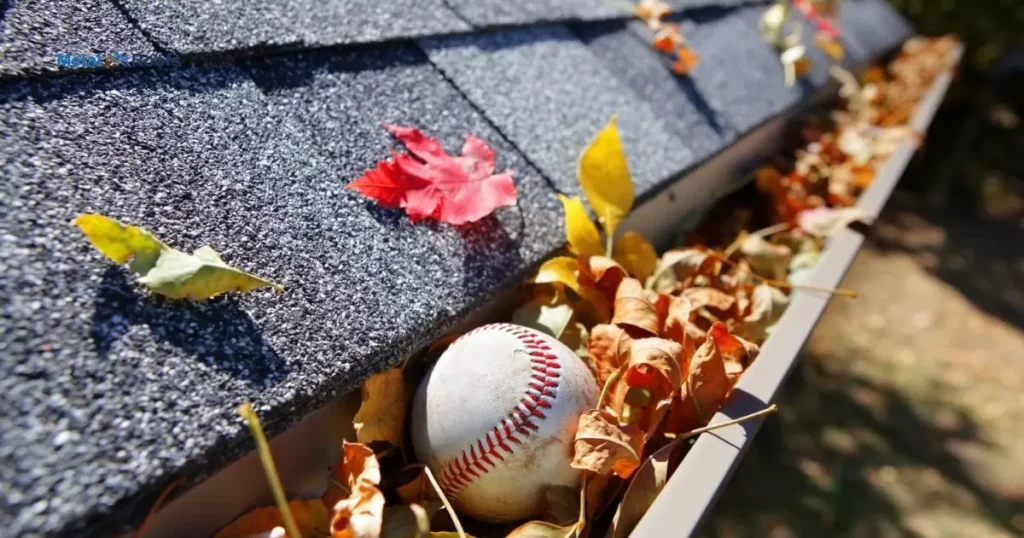
During different seasons, gutters may require specific maintenance. For example, in the fall, it is essential to remove fallen leaves to prevent gutter clogs. In the winter, ensure that your gutters are clear of ice dams to prevent damage from freezing temperatures.
Frequently Asked Questions
How Do You Secure Loose Gutters?
Tighten screws, replace damaged brackets, ensure proper attachment to fascia board.
How Do You Fix A Run Off Gutter?
To fix a run-off gutter ensure proper slope, clean debris, check downspouts, and repair damage.
What Holds Gutters In Place?
Screws, brackets, and the fascia board hold gutters in place. Regular maintenance ensures stability and proper drainage, preventing damage to your home.
Conclusion
Addressing a loose gutter promptly is crucial. Tightening screws, replacing damaged parts, and ensuring proper slope, you can maintain gutter stability. Regular maintenance helps prevent water damage and ensures home protection.
A securely attached gutter is essential for proper drainage. With simple steps and regular checks, you can keep your gutter in good condition. Don’t underestimate the importance of maintaining your gutter system for the overall well-being of your home.
